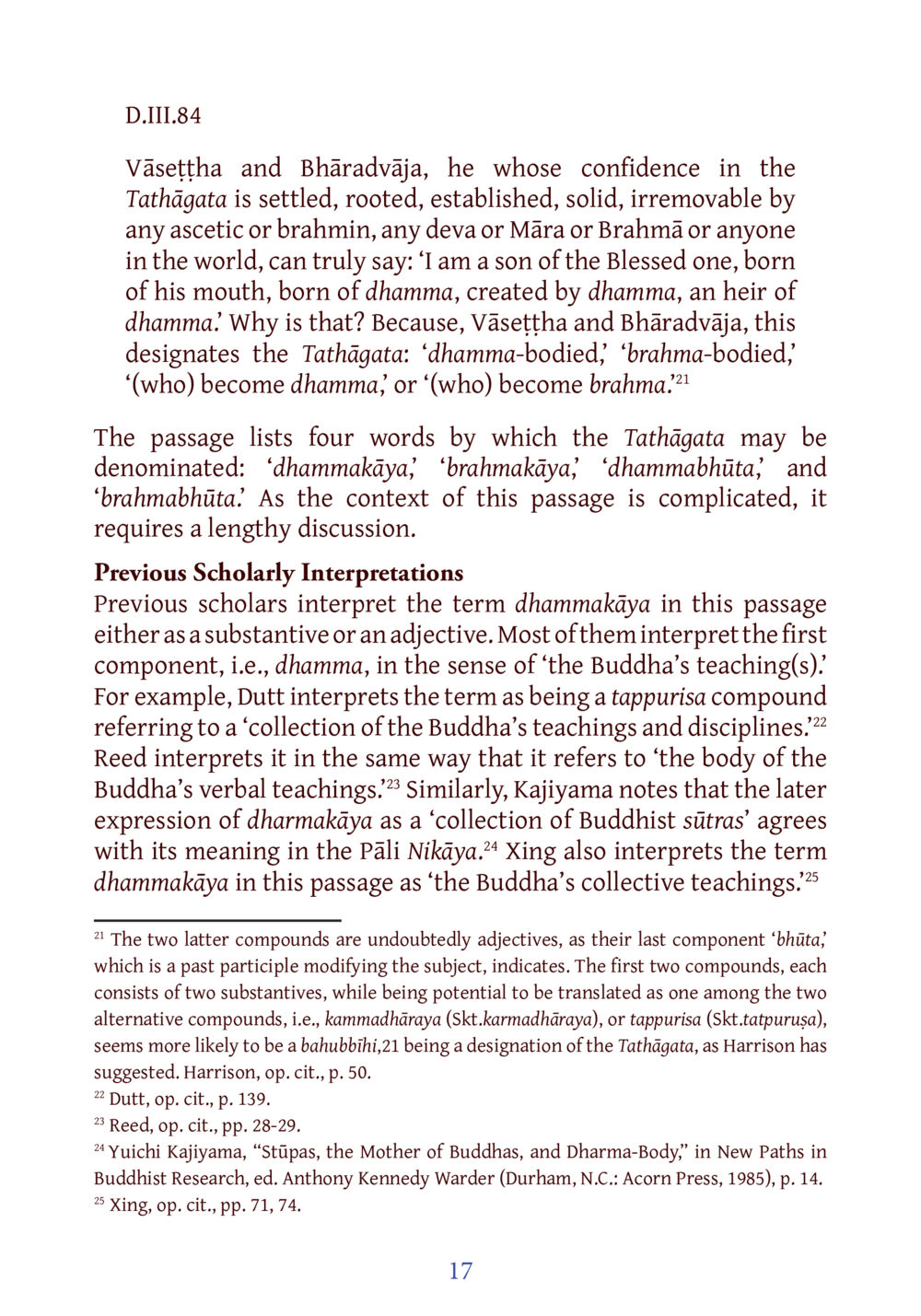Understanding the Concept of Dhammakāya in Buddhist Thought : หน้า 38/141
DIRI Journal : หน้า 38/141 An exploration of the Dhammakāya concept as a representation of the Buddha's teachings and its implications for followers.
1 ครั้ง

สรุปเนื้อหา
In this passage, Vāsettha and Bhāradvāja discuss the unwavering confidence in the Tathāgata, stating that those deeply rooted in dhamma can claim to be heirs of dhamma. The term 'dhammakāya' and its interpretations are scrutinized, with previous scholars such as Dutt and Reed suggesting it refers to the Buddha's collective teachings. These interpretations highlight the significance of dhamma as not just a collection of teachings but as an essential part of the Tathāgata’s being. The complexity of the passage demands a thorough discussion of the compounds that describe the Tathāgata and the varying scholarly interpretations surrounding them. For further information, visit dmc.tv.
หัวข้อประเด็น
-Understanding the concept of Dhammakāya
-Interpretations of Buddhist teachings
-Philosophical implications of dhamma
-History of Dhammakāya in Buddhist texts
-Scholarly discourse on Tathāgata and dhamma
ข้อความต้นฉบับในหน้า
หน้าหนังสือทั้งหมด













































































































































